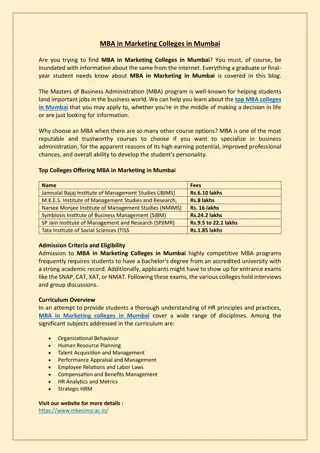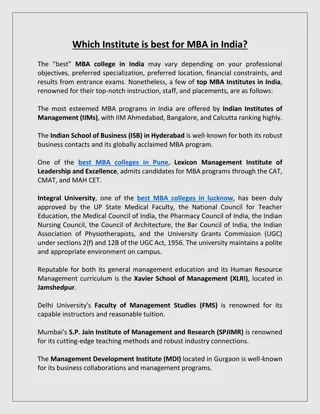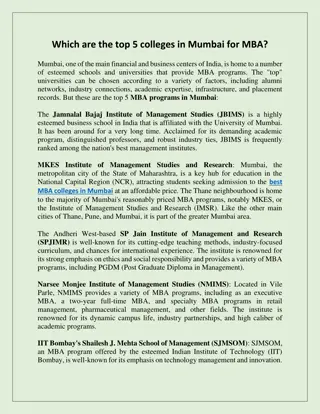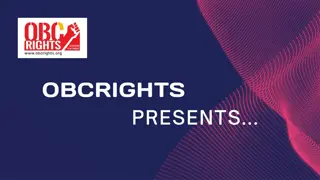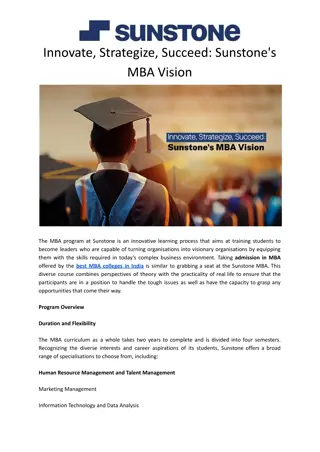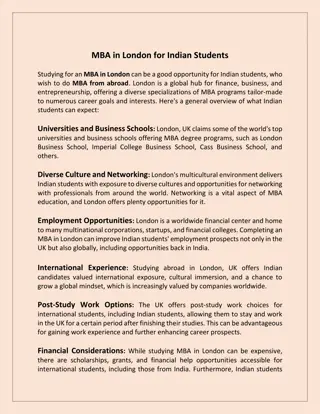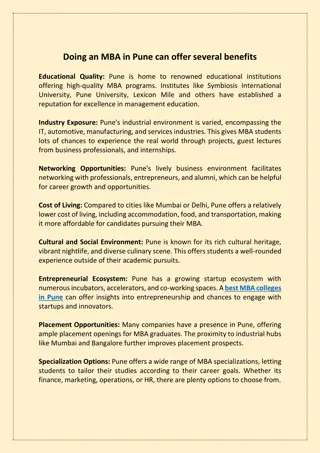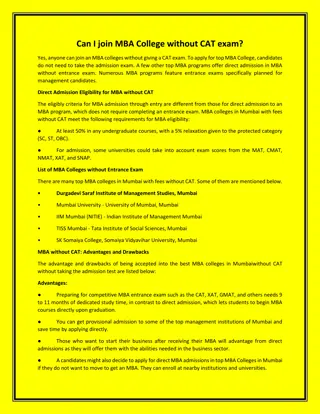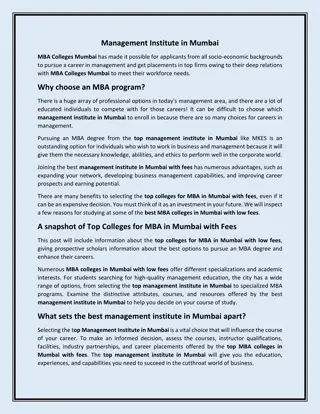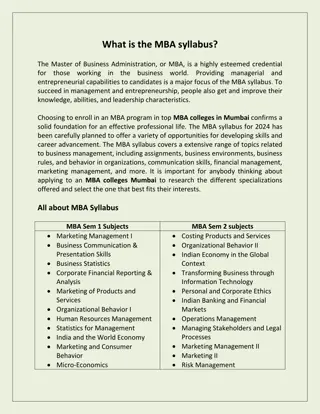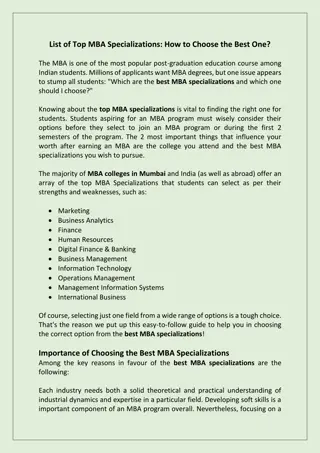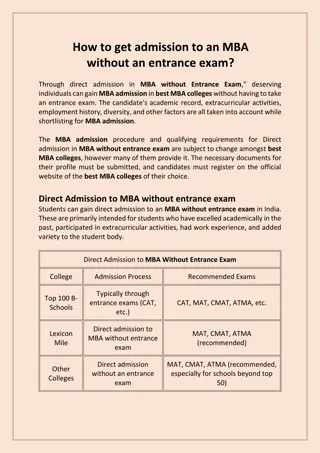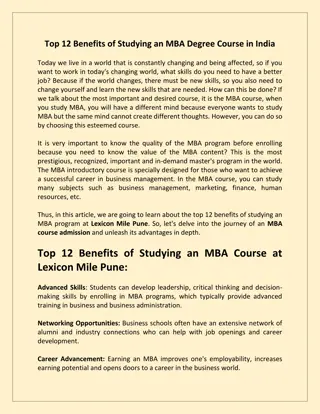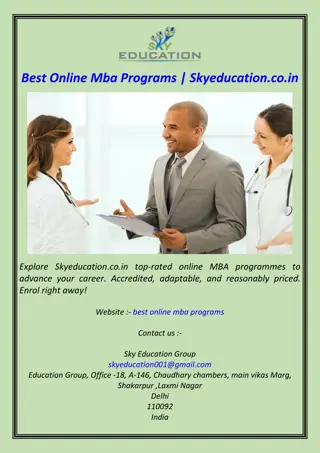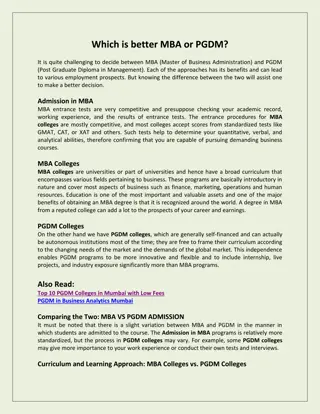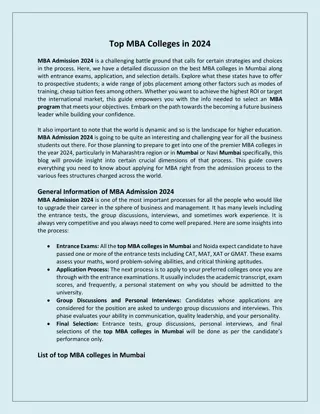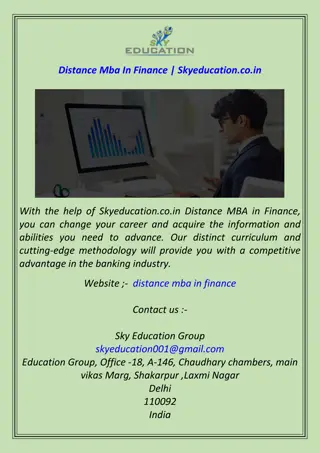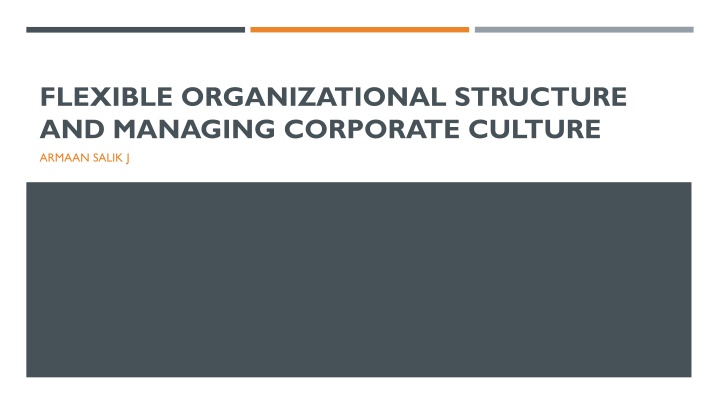
Flexible Organizational Structures and Corporate Culture
Explore the significance of flexible organizational structures in modern businesses, including types like matrix, network, team-based, project-based, and flat structures. Learn how adaptability and innovation are fostered, leading to faster decision-making, better employee engagement, and improved customer satisfaction within the company's corporate culture.
Download Presentation

Please find below an Image/Link to download the presentation.
The content on the website is provided AS IS for your information and personal use only. It may not be sold, licensed, or shared on other websites without obtaining consent from the author. If you encounter any issues during the download, it is possible that the publisher has removed the file from their server.
You are allowed to download the files provided on this website for personal or commercial use, subject to the condition that they are used lawfully. All files are the property of their respective owners.
The content on the website is provided AS IS for your information and personal use only. It may not be sold, licensed, or shared on other websites without obtaining consent from the author.
E N D
Presentation Transcript
FLEXIBLE ORGANIZATIONAL STRUCTURE AND MANAGING CORPORATE CULTURE ARMAAN SALIK J
INTRODUCTION What is an Organizational Structure? Defines how activities such as task allocation, coordination, and supervision are directed toward achieving organizational goals. Determines the hierarchy, communication flow, and decision-making processes in a company. Importance of Flexibility in Modern Organizations Traditional structures are often rigid and slow to adapt. A flexible structure enables quick response to market changes, enhances innovation, and supports employee empowerment. Overview of Corporate Culture & Its Role Corporate culture refers to shared values, beliefs, and behaviors within an organization. A strong corporate culture enhances collaboration, engagement, and organizational success.
UNDERSTANDING FLEXIBLE ORGANIZATIONAL STRUCTURE Definition: A flexible organizational structure allows adaptability in roles, communication, and processes, ensuring efficiency in dynamic environments. Key Characteristics: Traditional Structure Hierarchical, top-down Fixed roles & responsibilities Bureaucratic decision-making Less innovation Flexible Structure Decentralized, network-based Dynamic, evolving roles Fast, collaborative decisions Encourages innovation Decentralized decision-making Adaptability to change Cross-functional collaboration Fluid reporting relationships
TYPES OF FLEXIBLE ORGANIZATIONAL STRUCTURES Matrix Structure Infosys Employees work under multiple reporting managers, such as project managers and department heads. Example: Infosys follows a matrix structure where IT professionals work on different client projects while reporting to both functional and project managers. Network Structure OYO Rooms A decentralized structure where the company collaborates with partner hotels while managing branding and technology. Example: OYO does not own properties but partners with hotel owners, providing branding, booking technology, and customer service. Team-Based Structure Tata Consultancy Services (TCS) Agile teams work together on different projects instead of rigid hierarchical divisions. Example:TCS uses an agile team-based structure to develop software solutions, ensuring collaboration between cross-functional teams. Project-Based Structure Larsen & Toubro (L&T) Teams are formed for specific construction, engineering, or infrastructure projects. Example: L&T assigns engineers, architects, and project managers to various projects such as metro rail construction, highway projects, and smart city initiatives. Flat Organizational Structure Zerodha A minimal hierarchy that promotes employee autonomy and open communication. Example: Zerodha, India's largest stock brokerage firm, follows a flat structure where employees have direct access to leadership, fostering innovation and agility.
ADVANTAGES OF A FLEXIBLE STRUCTURE Faster Decision-Making Less bureaucracy, leading to quicker responses. Adaptability to Market Changes Allows companies to pivot based on market trends. Encourages Innovation Cross-functional collaboration fuels creativity. Better Employee Engagement Employees feel empowered with more autonomy. Improved Customer Satisfaction Faster service and personalized offerings.
CHALLENGES OF IMPLEMENTING FLEXIBILITY Resistance to Change Employees may be uncomfortable with uncertainty. Communication Barriers Remote or cross-functional teams may struggle with coordination. Balancing Control & Autonomy Managers must ensure flexibility without losing organizational control. Maintaining Coordination Overlapping responsibilities can lead to conflicts. Solution Strategies: Clear communication channels Change management programs Leadership commitment to flexibility
MANAGING CORPORATE CULTURE Definition of Corporate Culture: A set of shared values, beliefs, and practices that shape how employees interact and work. Elements of a Strong Corporate Culture: Shared Values Common beliefs that unite employees. Norms & Behaviors Expected conduct within the organization. Leadership Style Influence of top management on culture. Communication & Collaboration How information flows within the company. Example: Google s culture promotes creativity, collaboration, and openness.
IMPORTANCE OF CORPORATE CULTURE Enhances Employee Morale Employees feel motivated in a positive work environment. Drives Organizational Performance A strong culture aligns employees with strategic goals. Attracts & Retains Talent A healthy culture increases employee retention. Supports Business Strategy Culture defines how strategies are implemented. Example:Amazon s customer-centric culture aligns with its business model.
TYPES OF CORPORATE CULTURES Clan Culture (Collaborate) Infosys A family-like work environment that emphasizes teamwork, mentorship, and employee well-being. Example: Infosys fosters a strong employee-centric culture with initiatives like training programs, employee engagement activities, and leadership development. Adhocracy Culture (Create) Tata Group Encourages innovation, risk-taking, and new ideas to drive growth. Example:Tata Group promotes innovation across its subsidiaries, such as Tata Motors electric vehicle (EV) initiatives (Tata Nexon EV) and TCS AI-driven solutions. Market Culture (Compete) Reliance Industries Highly competitive, result-oriented, and focused on market leadership. Example: Reliance Industries follows an aggressive expansion and competition-driven strategy, especially in sectors like Jio (telecom) and Reliance Retail. Hierarchy Culture (Control) State Bank of India (SBI) Structured, rule-driven, and focused on efficiency and stability. Example: SBI operates with a strict hierarchical system, with well-defined policies and procedures to ensure regulatory compliance and customer trust.
ALIGNING CORPORATE CULTURE WITH ORGANIZATIONAL FLEXIBILITY Leadership s Role Leaders set the tone for a flexible and adaptive culture. Encouraging Open Communication Transparency builds trust and adaptability. Promoting Employee Empowerment Encourages employees to take initiative. Continuous Learning & Adaptation A learning mindset fosters innovation. Example: Netflix s Freedom & Responsibility culture allows employees to make independent decisions.
CASE STUDIES ON FLEXIBLE STRUCTURES & CORPORATE CULTURE Wipro Agile & Team-Based Structure Wipro follows an agile and team-based structure, promoting collaboration in IT services and digital transformation projects. Example:Wipro's "HOLMES AI Platform" enables teams to work flexibly on AI-driven automation solutions, enhancing innovation. Bharti Airtel Market Culture & Competitive Growth Airtel follows a market-driven culture, focusing on rapid expansion, customer acquisition, and technological advancements. Example:Airtel s "Project Leap" is a 60,000 crore investment in digital infrastructure, showing its commitment to staying ahead in telecom. HDFC Bank Hierarchy & Customer-Centric Culture HDFC Bank follows a structured hierarchy while maintaining a customer-focused work culture that drives innovation in banking. Example: HDFC launched "Eva" (an AI-powered chatbot) to enhance customer service, showing adaptability within a hierarchical system. Dream11 Flat Structure & Employee Empowerment Dream11, India s leading fantasy sports platform, operates with a flat structure, fostering innovation and direct communication. Example: Employees at Dream11 work in autonomous squads, enabling faster decision-making and creative problem-solving. TVS Motor Company Adhocracy Culture & Innovation TVS encourages experimentation and innovation, giving different teams flexibility to explore new technologies. Example:TVS developed India's first connected scooter (TVS NTorq 125), reflecting its commitment to agile and innovative practices.
STRATEGIES FOR MANAGING CULTURE IN A DYNAMIC ENVIRONMENT 1. Define & Reinforce CoreValues Ensure employees align with the company s vision. 2. Promote a Culture ofTrust Transparency and open dialogue are crucial. 3. Encourage Diversity & Inclusion Different perspectives drive innovation. 4. Support Continuous Learning Training and upskilling keep employees adaptable. 5. Measure & Adapt Culture Regularly Conduct surveys and feedback sessions to ensure cultural alignment.


